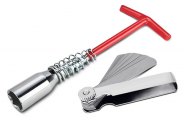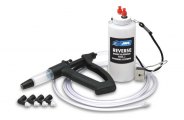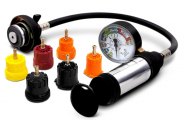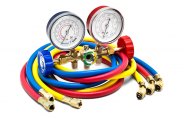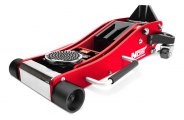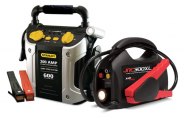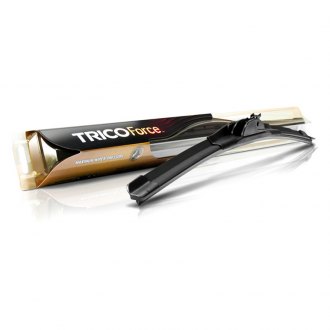Avanti Accessories & Parts

Avanti Parts
Avanti Wheels & Tires
Avanti Exterior Accessories
Avanti Automotive Lighting
Avanti Body Parts
Avanti Interior Accessories
Universal Audio & Electronics
 Installation Parts
Installation Parts Stereos
Stereos Speakers
Speakers Amplifiers
Amplifiers Subwoofers
Subwoofers Cameras & Driver Safety
Cameras & Driver Safety Alarms & Remote Start
Alarms & Remote Start CB Radios & Components
CB Radios & Components Antennas & Components
Antennas & Components iPhone & Android Integration
iPhone & Android Integration Bluetooth
Bluetooth Equalizers & Processors
Equalizers & Processors Batteries & Power
Batteries & Power Video
Video Radar Detectors
Radar Detectors GPS Systems
GPS Systems Mounts & Chargers
Mounts & Chargers Action Cameras & Accessories
Action Cameras & Accessories
Avanti Automotive Tools
 Oil Change Tools
Oil Change Tools Engine Service Tools
Engine Service Tools Pullers & Installers
Pullers & Installers Lockout Kits
Lockout Kits Automotive Lifts & Stands
Automotive Lifts & Stands Repair Manuals
Repair Manuals Spark Plug & Ignition Tools
Spark Plug & Ignition Tools Wheel & Tire Service Tools
Wheel & Tire Service Tools Brake Service Tools
Brake Service Tools Suspension & Steering Service Tools
Suspension & Steering Service Tools Fuel System Service
Fuel System Service Transmission & Drivetrain Service Tools
Transmission & Drivetrain Service Tools Cooling System Service Tools
Cooling System Service Tools A/C Tools & Equipment
A/C Tools & Equipment Electrical System Tools
Electrical System Tools Diagnostic & Testing Tools
Diagnostic & Testing Tools Exhaust System Service Tools
Exhaust System Service Tools Auto Glass Tools
Auto Glass Tools Jacks
Jacks Automotive Paint
Automotive Paint EV Charging
EV Charging Battery Chargers & Jump Starters
Battery Chargers & Jump Starters Dollies & Movers
Dollies & Movers Creepers
Creepers Auto Detailing
Auto Detailing Key Cutting Machines
Key Cutting Machines Dent Repair Tools
Dent Repair Tools Service Carts
Service Carts Vehicle & Parts Protection
Vehicle & Parts Protection
The difference between a collectible classic and just an old car is the model’s continued popularity with enthusiasts long after the last one was made. Since many cars considered classics today, like ’55-’57 Chevys, and early Mustangs and Corvettes, were mass produced, there is generally a sufficient number available on the market to meet demand. But what about classics that were produced in low volume? Only about 1000 original Shelby Cobras were produced, and today these cars routinely change hands for hundreds of thousands to millions of dollars. Those factors spawned a whole cottage industry of “cobra replica” companies that cater to enthusiasts who may not be affluent enough to afford an original but still want the Cobra experience. During its brief existence only about 9000 DMC-12s were built by the original DeLorean Motor Company, but (no doubt with help from the “Back to the Future” movies) the car remained popular long after DeLorean’s demise and today a new company builds brand new DMC-12s in Texas. The Avanti was another such vehicle, one whose popularity endured long after the end of the Studebaker Corporation from whence it came.
The Avanti was a revolutionary vehicle, both aesthetically and mechanically; a combination of stunning appearance, exhilarating performance and groundbreaking safety. It was also the last gasp of a dying company and its introduction was not enough to save Studebaker. Nevertheless, it captivated car enthusiasts so much that limited production of the car continued for over four decades by a succession of companies. The brainchild of Studebaker president Sherwood Egbert and intended to create attention and sales for the troubled brand, the Avanti originated in 1961 from some sketches he made while on a business trip. Celebrated designer Raymond Loewy, who had a hand in the design of previous Studebakers including the Starliner Coupe, was engaged to bring the project from concept to reality. The final design delivered by Loewy’s team had a long hood and short deck, with sharply defined front fenders, a large rear window and waspish, coke bottle shape that narrowed at the doors. Unlike other cars of the day the Avanti had no grille, and drew in air for engine cooling from under the bumper. It was a masterpiece, years ahead of just about everything else on the market, American or European, and remains one of the most significant designs in automobile history. But the magnificence of the Avanti went far deeper than its looks.
The body of the four-seat 2-door coupe was made of fiberglass and mounted on a Lark convertible chassis with sports suspension and front and rear sway bars. It had safety features that were generally unheard of at the time like a built-in roll bar, padded interior, and front disc brakes. The cockpit had 4 buckets seats and aircraft inspired gauges and controls. Luxury options like air conditioning, power steering and power windows were available, and customers had a choice of 4-speed manual or 3-speed automatic transmission. The standard R1 engine was Studebaker’s 289 cu. in. OHV V8 with 4-barrel carburetor, high-lift camshaft, dual point distributor, and dual exhaust that made 240 hp. The Paxton supercharger equipped R2 version of this engine boosted horsepower to 290. Approximately 9 Avantis were equipped with the Andy Granatelli developed R3 engine. This was a 289 that was punched out to 304 cu. in., with big port cylinder heads, long duration camshaft, aluminum intake manifold, and Paxton supercharger, which developed 335 horsepower on the dyno. Granatelli prepped a team of Studebakers that set 72 records at the Bonneville Salt Flats in 1963, including an R3 Avanti that ran a 170 mph flying mile, which at the time made it the fastest American production car.
The Avanti debuted to rave reviews at the 1962 New York auto show and became available to the public in the fall of that year. It was priced just slightly higher than the Chevrolet Corvette, which of course had room for only two people. However, although Studebaker planned to build 20,000 Avantis that year, quality control and supplier problems resulted in the completion of only 1200. Many of the orders that had flooded in after the car’s introduction were cancelled, and customers were further spooked by rumors of Studebaker’s impending demise. Less than 4000 Avantis were built in 1963, of which 809 were 1964 models, before the South Bend, Indiana production plant closed in December. But although Studebaker was finished in the U.S. (the Canadian plant remained in operation until 1966 building Studebaker Commanders, Cruisers, and Daytonas) that was not the end for the Avanti.
Indiana Studebaker dealer Nate Altman and his business partner Leo Newman felt that a car as remarkable as the Avanti should not just be allowed to die along with Studebaker. There was still a lot of interest in the Avanti, and after unsuccessfully trying to get one of the other big auto makers to produce the car, they bought the rights to the name, the production tooling and even the same factory buildings so they could manufacture it themselves. Their new company, called Avanti Motor Corporation, retained the former Studebaker chief engineer and worked with Studebaker’s former suppliers. However, because Studebaker was gone certain changes to the car were necessary and even welcome. Although a lot of power had been coaxed out of the Studebaker V8, its basic design was ancient and the new car, dubbed the Avanti II, was powered by the lighter and more powerful Chevrolet 327 cu. in. OHV V8. A variant of the small block Chevrolet in sizes including 350, 400, and 305 cu. in. would power Avanti IIs for the next few decades.
Under the leadership of Nate Altman, and later his brother Arnold when Nate passed away in 1976, Avanti IIs were hand-assembled in low numbers, with a peak production of 165 in 1978. They were of higher quality than the original Studebaker built cars and buyers had their choice of exterior and interior finishes, as well as options including air conditioning, power steering, power windows, and AM/FM radio. In 1982 the company was acquired by real estate developer Stephen Blake, who had purchased an Avanti II in 1975. Blake modernized the exterior of the car, now called Avanti again without the II, adding body-color bumpers and the rectangular headlights that were the style of the day. The car was updated in other ways as well including the way it was manufactured and sold. Instead of selling direct from the factory as the Altman’s had done during the 1970s, Blake re-established a dealer network. In 1983 the company introduced a 20th Anniversary Edition, a Touring Sedan debuted the following year, and there were plans for a convertible. However, one of the attempts to upgrade the car backfired when the new urethane paint formula did not adhere to the body panels. This resulted in many cars having to be repainted and the resulting expense caused the company to declare bankruptcy.
Mike Kelly purchased the assets of the company in 1986 and changed the name to the New Avanti Motor Corporation. He undertook a long overdue modernization of the chassis and the 1987 cars had GM G-body underpinnings, the same as used on the Chevrolet Monte Carlo and El Camino. The company was then acquired by John Cafaro, who moved production from South Bend to Youngstown, Ohio. Under Cafaro the company made 2-door coupes and convertibles, and even a 4-door sedan until 1991 when it again went bankrupt. Except for a prototype designed by Tom Kellogg, an original member of the Loewy design team, no Avantis were built during the rest of the 1990s. The prototype, dubbed “AVX”, consisted of a modernized Avanti body mounted on a GM F-Body (Camaro, Firebird) chassis. In 1999 Mike Kelly regained control of the New Avanti Motor Corporation and moved operations first to Georgia, and then to Mexico. Production resumed in 2001, first with the F-Body chassis, and then beginning in 2004, on Ford Mustang chassis. Unfortunately, the company failed again and the last Avanti was built in 2006.
The Avanti is a unique automobile and tremendous enthusiasm for the car continues to this day. Unlike many classics that are obviously of a certain era, the Avanti’s inimitable design gives the car a timeless appeal that will no doubt continue to delight future generations of car buffs. If you’re contemplating becoming an Avanti owner, there is an active club and numerous resources for information. We stand ready to be a resource as well, with a large supply of maintenance supplies, repair parts and appearance products to help keep your Avanti in top shape.
Dress your vehicle up. Keep it running at its peak or unleash its hidden power. Make it look like it just rolled off the show room floor. Take care of it and maintain it. You name it, we've got it. We have gathered everything you need to make your Avanti perfect both inside and out. CARiD's job is to meet your every expectation and provide you with quality and durable accessories and parts designed with excellence in mind. Whether you're after luxurious style, brisk performance, or anything in between, our wide assortment covers all the bases.


